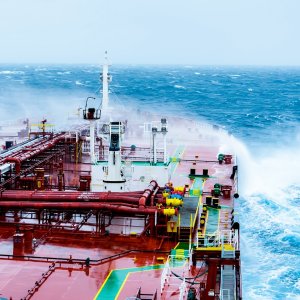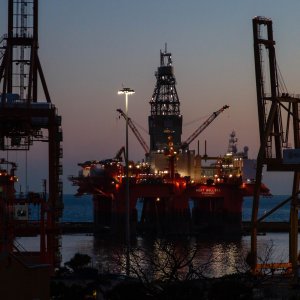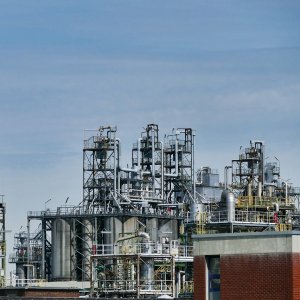
Ormen Lange: Model for Lakach?
One of the world’s most interesting offshore developments is 120km off the coast of Kristiansund, as no gas processing platform is installed at the Ormen Lange field unlike the majority of deepwater gas developments. Instead, as a solution to the challenge of producing gas at deepwater depths of 800-1100m, the contractor FMC Technologies decided to install subsea infrastructure to bring the gas back to shore for processing. This is one technology that Mexico is considering for the development of deepwater gas fields such as Lakach.
One of the major reasons for the subsea development in Ormen Lange are the environmental conditions above the water which are simply too harsh for much of the year: stormy seas, an uneven seabed for securing a platform, freezing temperatures and strong underwater currents. These environmental conditions provide challenges even for a subsea solution, but the danger to workers is greatly reduced by moving gas processing onshore. The advantages of a subsea-to-beach transportation system are numerous: it can be over 500km in length, deals well with pressure/velocity drop, allows for subsea gas compression, improved flow assurance and thermal management, with no emissions at sea and a faster and simpler installation.
Statoil exploits the 320km2 reservoir through 24 subsea wellheads connected to four seabed templates. The contractor FMC found the preparation of the seabed for the installation of these templates extremely challenging, and used a remote-controlled subsea dredger working in almost zero visibility. Then the templates had to be lowered to the seabed; the installation crew had only one chance to do this with a precision of only a few centimetres, as once the templates had been lowered to the ocean floor they would be immovable.
Two multi-phase, 30-inch pipelines bring the gas onshore from the subsea templates to Nyhamna, where it is dried and compressed. Once it has been processed, the gas is dispatched in a 1200km pipeline with a capacity of 60 million cubic metres per day to the UK, supplying 15% of the UK’s gas demand. When it was built, this was the world’s longest subsea pipeline. The tieback to shore was extremely challenging for contractor FMC Technologies. As well as dealing with the extremely uneven seabed, FMC had to adapt its technologies to deal with sub-zero seabed temperatures, slow dynamics and long time delays in the pipelines, high volume MEG injection per tree, liquid slugs, and the challenge of designing a structure that would have a life of 50 years.
Impression of the final compression station to be installed at approximately 900 meters water depth. Dimensions could be as much as 70m in length, 54m wide and stand 14m high.
Production at Ormen Lange began in 2007, 10 years after the discovery of the field. Ormen Lange was operated by Statoil in the development phase, after which Norske Shell took over operatorship in the production phase. Gas from the field will be recovered by pressure depletion, with gas compression expected to be needed by around 2017. To prepare for this eventuality, Aker Solutions has developed a subsea compression pilot project, which will handle 2.12 Bcf throughput per day, in water depths of 900m. This technology is relatively new in the oil and gas industry, and has implications for how far a wellstream will be able to travel, which will allow for longer step-outs, and will bring better rates of recovery than surface systems, because the closer compression occurs to the wellhead, the more efficient it is. The system also has lower CAPEX and OPEX costs than a conventional surface system, not counting the cost of development of the technology. Like many subsea systems, subsea compression reduces the human safety risk. The world’s first subsea compression system will come online at Norway’s Åsgard project in 2014, and experiences will be shared in order to ensure the success of the system when it is installed at Ormen Lange.

















